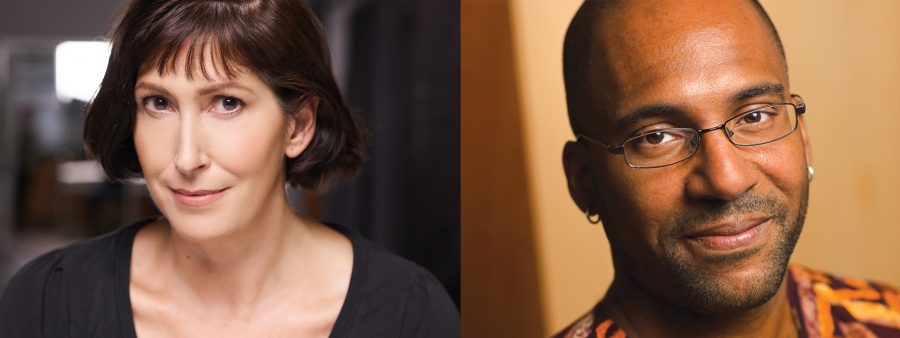Two University professors awarded NEH fellowship
Photo courtesy of Carol Symes and CFA Illinois
History and Medieval Studies professor Carol Symes (left) and History and African American Studies professor (right) are the two University professors who won the NEH award and fellowships.
Dec 26, 2016
Last updated on Jan. 6, 2017 at 10:54 a.m.
The National Endowment for the Humanities (NEH) Fellowships for 2017 have been awarded to two University professors: Carol Symes and Erik McDuffie.
The NEH awarded a total of 290 fellowships, totaling to 16.3 million dollars in grants.
The National Endowment for the Humanities is an independent federal agency and one of the largest funders of humanities programs in the United States.
The program supports advanced research in the humanities, allowing recipients to produce articles, books, digital materials or other scholarly resources.
Get The Daily Illini in your inbox!
Symes is a professor of History and Medieval Studies, who will use her fellowship on a project regarding medieval Europe.
McDuffie is a History and African American Studies professor, whose project will focus on 20th century African American history.
The NEH averages around 1,210 applications per year for fellowships in the last five rounds of the competition, according to the NEH website.
Awarding an average of 80 fellowships per year with a funding rate of seven percent makes the fellowships among the most competitive humanities awards in the country.
“Fellowships from the National Endowment for the Humanities are very prestigious and difficult to obtain, so it is a true honor to have been selected as one of this year’s recipients,” Symes said.
Symes’ project is a book entitled, “Activating Texts: Mediated Documents and Their Makers in Medieval Europe.”
She said that the fellowship not only gives her the time she needs to complete the book, but also a vote of confidence, which she finds valuable because her project is ambitious and potentially controversial.
“Knowing that experts in my field are excited about its implications and supportive of its goals is very gratifying,” she said.
Through the book, she aims to show the amount of different medieval texts that were created by historical actors— some who were illiterate— whose contributions to the documentary process have “since been silenced and forgotten.”
She said that this is not only true for obscure texts but very famous ones, like England’s Domesday Book and the Letters of Abelard and Heloise.
Because these texts have been separated from the original circumstances of their making, their contemporary meanings have been obscured, and so has knowledge of the media through which texts were negotiated and published, Symes said.
By returning documents to these lively and contested contexts, Symes calls for a radical reassessment of the ways that historians use written artifacts as historical sources.
“Although I focus on examples from western Europe in the 11th and 12th centuries,” Symes said, “My findings and methods are applicable to any era when the authority of the written word, and its media of dissemination, are undergoing rapid and unsettling changes — including our own internet age of social media and ‘fake news.’”
McDuffie’s project, entitled, “Marcus Garvey and the American Heartland, 1920-1980,” aims to look at Garveyism and the Universal Negro Improvement Association— the largest black protest movement in world history.
He will also show how they influenced the emergence of the U.S. industrial heartland as an epicenter of black internationalism.
By focusing on the contradictions and gendered contours of Garveyism, McDuffie intends to globalize African-American history and remodel the study of the African diaspora. He will also acknowledge the importance of the heartland in shaping the history of the 20th century black world, extending from Cleveland and Chicago to the Caribbean and Liberia.
[email protected]






